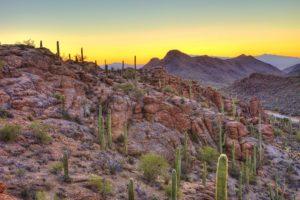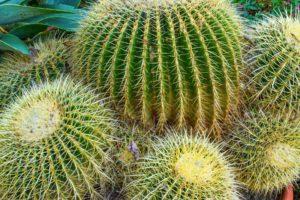Fodor's Expert Review Tucson Museum of Art and Historic Block
The museum consists of a modern building housing superb collections of Latin American Art and Western Art, and five adjacent historic buildings on Main Avenue that are listed in the National Register of Historic Places. You can tour four of the historic houses, La Casa Cordova, the Stevens Home, the J. Knox Corbett House, and the Edward Nye Fish House, though each have different hours. The fifth, the Romero House, believed to incorporate a section of the presidio wall, is now used for the museum's ceramics education program. Visitors enter through the main museum on Alameda Street. The Latin American Art wing includes ancient Andean and Incan sculpture and Spanish-Colonial art as well as contemporary Latin works. The Art of the American West exhibits showcase Western and indigenous Southwestern art.
La Casa Cordova, one of the oldest buildings in Tucson and one of the best local examples of a Sonoran row house has a Spanish-style design adapted... READ MORE
The museum consists of a modern building housing superb collections of Latin American Art and Western Art, and five adjacent historic buildings on Main Avenue that are listed in the National Register of Historic Places. You can tour four of the historic houses, La Casa Cordova, the Stevens Home, the J. Knox Corbett House, and the Edward Nye Fish House, though each have different hours. The fifth, the Romero House, believed to incorporate a section of the presidio wall, is now used for the museum's ceramics education program. Visitors enter through the main museum on Alameda Street. The Latin American Art wing includes ancient Andean and Incan sculpture and Spanish-Colonial art as well as contemporary Latin works. The Art of the American West exhibits showcase Western and indigenous Southwestern art.
La Casa Cordova, one of the oldest buildings in Tucson and one of the best local examples of a Sonoran row house has a Spanish-style design adapted to adobe construction. The oldest section of La Casa Cordova, constructed around 1848, is only open November to January to display El Nacimiento, the largest nativity scene in the Southwest.
The Stevens Home was where the wealthy politician and cattle rancher Hiram Stevens and his wife, Petra Santa Cruz, entertained many of Tucson's leaders during the 1800s. A drought brought the Stevens' cattle ranching to a halt in 1893, and Stevens killed himself in despair after unsuccessfully attempting to shoot his wife (the bullet was deflected by the comb she wore in her hair). The 1865 house was restored in 1980 and now houses Café à la C'Art, a delightful restaurant.
The J. Knox Corbett House was built in 1906–07 and occupied by members of the Corbett family until 1963. J. Knox Corbett was a successful businessman, postmaster, and mayor of Tucson, and his wife, Elizabeth Hughes Corbett, an accomplished musician and daughter of Tucson pioneer Sam Hughes. The two-story, Mission Revival–style residence has been furnished with Arts and Crafts pieces. It's open only on weekends.
The Edward Nye Fish House, an 1868 adobe that belonged to an early merchant, entrepreneur, and politician and his wife, is notable for its 15-foot beamed ceilings and saguaro cactus–rib supports.
Admission to the museum and all four homes is free on the second Sunday and the first Thursday evening of every month, and there are free docent tours daily.
READ LESS








